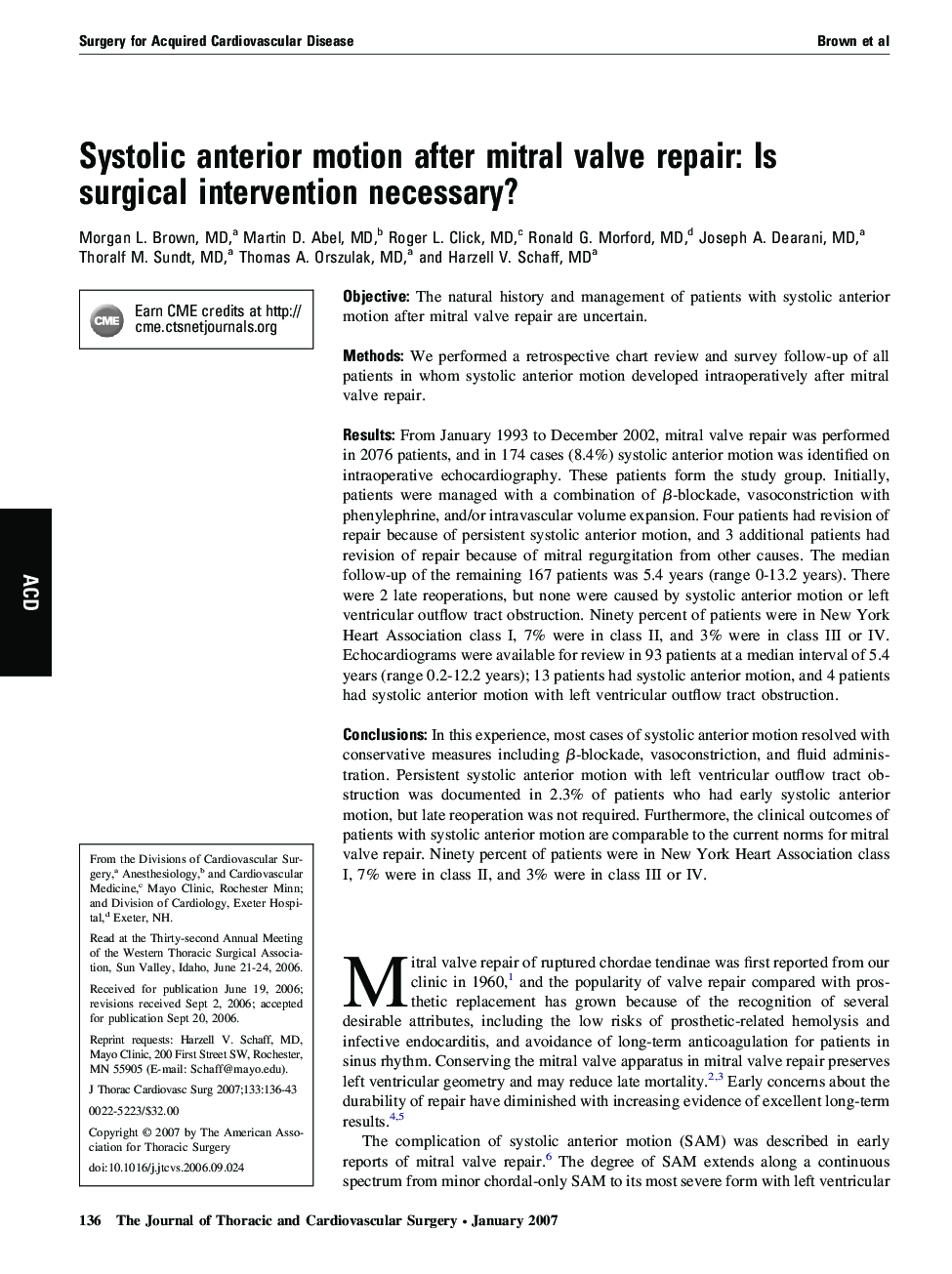| Article ID | Journal | Published Year | Pages | File Type |
|---|---|---|---|---|
| 2984871 | The Journal of Thoracic and Cardiovascular Surgery | 2007 | 8 Pages |
ObjectiveThe natural history and management of patients with systolic anterior motion after mitral valve repair are uncertain.MethodsWe performed a retrospective chart review and survey follow-up of all patients in whom systolic anterior motion developed intraoperatively after mitral valve repair.ResultsFrom January 1993 to December 2002, mitral valve repair was performed in 2076 patients, and in 174 cases (8.4%) systolic anterior motion was identified on intraoperative echocardiography. These patients form the study group. Initially, patients were managed with a combination of β-blockade, vasoconstriction with phenylephrine, and/or intravascular volume expansion. Four patients had revision of repair because of persistent systolic anterior motion, and 3 additional patients had revision of repair because of mitral regurgitation from other causes. The median follow-up of the remaining 167 patients was 5.4 years (range 0-13.2 years). There were 2 late reoperations, but none were caused by systolic anterior motion or left ventricular outflow tract obstruction. Ninety percent of patients were in New York Heart Association class I, 7% were in class II, and 3% were in class III or IV. Echocardiograms were available for review in 93 patients at a median interval of 5.4 years (range 0.2-12.2 years); 13 patients had systolic anterior motion, and 4 patients had systolic anterior motion with left ventricular outflow tract obstruction.ConclusionsIn this experience, most cases of systolic anterior motion resolved with conservative measures including β-blockade, vasoconstriction, and fluid administration. Persistent systolic anterior motion with left ventricular outflow tract obstruction was documented in 2.3% of patients who had early systolic anterior motion, but late reoperation was not required. Furthermore, the clinical outcomes of patients with systolic anterior motion are comparable to the current norms for mitral valve repair. Ninety percent of patients were in New York Heart Association class I, 7% were in class II, and 3% were in class III or IV.
